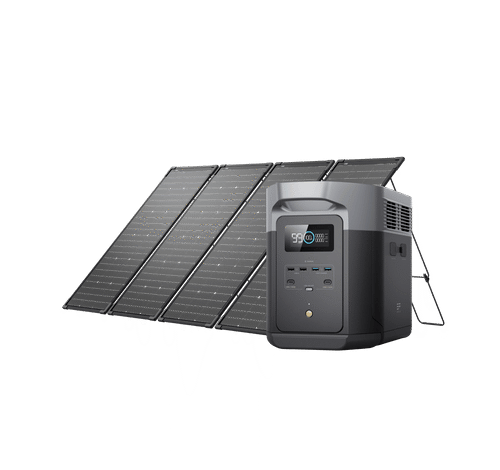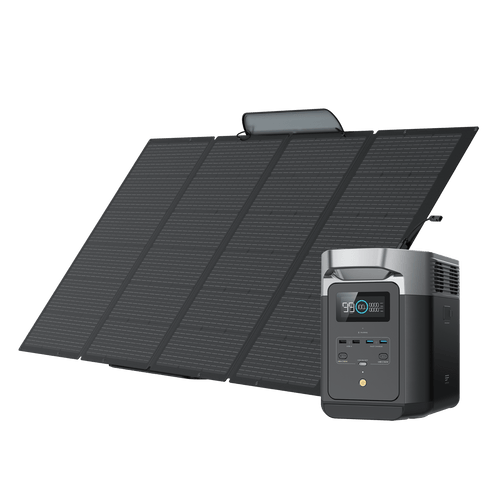Need Reliable Backup Power? Try Portable Solar Generators

When the lights suddenly go dark and your home plunges into silence, the vulnerability of modern life becomes starkly apparent. For millions of homeowners, especially in regions prone to severe weather or grid instability, power outages aren’t just inconvenient—they’re a recurring threat to comfort and safety. Enter the modern solution: portable power stations. These versatile power stations combine advanced battery technology with solar charging capabilities, offering a reliable lifeline during outages while maintaining environmental consciousness. Unlike traditional generators, these quiet, emission-free systems provide instant backup power for your essential devices, from smartphones to refrigerators. With their ability to harness renewable energy and deliver consistent power when you need it most, portable solar generators are revolutionizing how homeowners approach emergency preparedness and energy independence.
Understanding Portable Power Stations: Your Modern Backup Solution
Portable power stations represent a significant advancement in backup power technology, combining high-capacity batteries with sophisticated power management systems. At their core, these devices feature advanced lithium batteries, multiple charging ports, and intelligent cooling systems—all housed in a compact, transportable design. Unlike traditional gas generators that require fuel storage, regular maintenance, and produce harmful emissions, portable power stations operate silently and cleanly, making them ideal for indoor use and residential areas.

The heart of these systems typically uses one of two battery technologies: Lithium Iron Phosphate (LiFePO4) or Lithium-Ion (NMC). LiFePO4 batteries excel in safety and longevity, often lasting over 3,500 cycles while maintaining stable performance even under extreme conditions. NMC batteries, while slightly less durable, offer higher energy density, resulting in more compact units. Both technologies far surpass traditional lead-acid batteries in reliability and performance.
Modern portable power stations deliver impressive specifications, with output capabilities ranging from 1800W to 7200W—sufficient to power essential home appliances. They feature diverse output options, including standard AC outlets, USB ports, and DC outputs, enabling simultaneous charging of multiple devices. Advanced models incorporate smart features like app connectivity, automated power management, and expandable capacity through additional battery modules.
Solar Generators: The Renewable Power Advantage
The term “solar generator” specifically refers to a portable power station paired with solar panels, creating a complete renewable energy system. This combination enables users to harness solar energy during daylight hours, converting sunlight into stored electrical power through built-in MPPT charge controllers. During outages, this solar charging capability becomes invaluable, providing a sustainable power source independent of the grid. The system can maintain continuous operation as long as sunlight is available, making it particularly effective for extended emergency situations where traditional fuel supplies might be limited or inaccessible.

Why Homeowners Need Solar-Ready Backup Power
Recent years have seen an alarming increase in power outages across the country, with severe weather events and aging infrastructure creating unprecedented grid vulnerabilities. Major storms, wildfires, and extreme temperatures regularly threaten residential power supply, leaving households in the dark for hours or even days. During these outages, critical home systems like refrigerators, security systems, and medical equipment become inoperable, potentially leading to food spoilage, compromised safety, and health risks for those dependent on powered medical devices.
Solar-ready backup power systems offer a reliable solution that addresses these challenges while eliminating common generator drawbacks. Unlike traditional gas generators that require fuel stockpiling and produce harmful emissions, solar generators provide clean, quiet operation ideal for residential areas. They eliminate the need to store volatile fuels or venture out during emergencies to refill gas tanks. Most importantly, their solar charging capability ensures continuous power generation as long as sunlight is available, providing true energy independence during extended outages when fuel supplies might be limited or inaccessible.
For homeowners in outage-prone regions, this self-sufficiency becomes particularly crucial when community resources are strained during widespread emergencies. The ability to maintain essential services—keeping medications refrigerated, phones charged, and basic lighting operational—can make the difference between managing an outage comfortably and facing a household crisis.
Choosing Your Portable Power Station: Key Considerations
Selecting the right portable power station begins with a careful assessment of your household’s power requirements. Calculate your total watt-hour needs by listing essential devices and their power consumption—multiply each device’s wattage by its expected hours of use during an outage. For example, a 60W refrigerator running 24 hours requires 1,440 watt-hours daily, while multiple devices like phones, laptops, and lights can add another 500-1000 watt-hours to your needs.
Modern power stations offer diverse charging capabilities to ensure reliable power restoration. While AC wall charging provides the fastest recharge times, car charging offers mobility during evacuations. Solar charging stands out as the most versatile option, enabling indefinite power generation during extended outages. When evaluating solar compatibility, focus on the station’s maximum solar input rating and supported panel voltage ranges to maximize charging efficiency.
The balance between portability and capacity represents a crucial decision point. While higher capacity units provide extended runtime, they typically weigh more and cost more. Leading manufacturers like EcoFlow have addressed this challenge with innovative solutions such as modular expansion capabilities, allowing users to scale their backup power capacity without sacrificing mobility. Advanced features like rapid solar charging, intelligent load management, and comprehensive safety systems have become standard in premium models.
Solar Charging Setup Guide
Maximizing solar charging efficiency requires careful attention to panel selection and placement. Choose solar panels that match your power station’s voltage and current specifications—typically 100W to 400W panels work best for portable systems. Position panels facing south in the Northern Hemisphere, maintaining a 30-45 degree angle for optimal sun exposure. Consider seasonal sun patterns and local weather conditions when planning panel placement. Under ideal conditions, a 400W solar array can recharge a mid-sized power station in 4-8 hours, though actual times vary with sunlight intensity and panel positioning.
Implementing Your Backup Power System: Step-by-Step
Setting up a reliable backup power system requires careful planning and systematic implementation. Begin with a thorough safety assessment of your intended storage location, ensuring it’s dry, well-ventilated, and easily accessible. Choose a central area that allows quick connection to essential devices while maintaining proper clearance for heat dissipation. Install surge protectors between your power station and sensitive electronics to provide additional protection during power transitions.
When connecting solar panels, secure all mounting hardware and verify cable connections are weatherproof. Route cables through proper conduit to prevent UV damage and physical wear. For wall outlet charging, designate a dedicated circuit to avoid overloading, and consider installing a transfer switch for seamless power transitions. Create a prioritized device connection plan, starting with critical medical equipment and refrigeration, followed by communication devices and essential lighting.
Develop a maintenance schedule that includes monthly battery cycling, quarterly connection inspections, and bi-annual deep cleaning of solar panels. Store your system at 40-80% charge when not in use, and protect it from extreme temperatures. Maintain an emergency kit alongside your power station, including spare cables, weatherproof covers, and basic tools. Keep a laminated quick-start guide with your system, outlining connection procedures and safety protocols for all family members. Regular testing during normal conditions ensures familiarity with the system and confirms everything functions properly when needed.
Securing Your Home’s Energy Future
The rising frequency of power outages and increasing grid vulnerabilities make reliable backup power essential for modern homeowners. Portable solar generators represent a significant leap forward from traditional backup solutions, offering clean, quiet operation without the ongoing fuel costs and maintenance headaches of gas generators. Their ability to harness solar energy provides true energy independence, ensuring your home stays powered even during extended outages when fuel supplies may be scarce. The combination of advanced battery technology, smart features, and solar charging capabilities creates a robust, future-proof solution for home backup power needs. As extreme weather events become more common and grid stability concerns grow, investing in a solar-ready portable power station isn’t just about emergency preparedness—it’s about taking control of your home’s energy security. Start by assessing your household’s critical power needs today, and take the first step toward reliable, sustainable backup power that protects your family when it matters most.
The post Need Reliable Backup Power? Try Portable Solar Generators appeared first on MyNewsGh.



